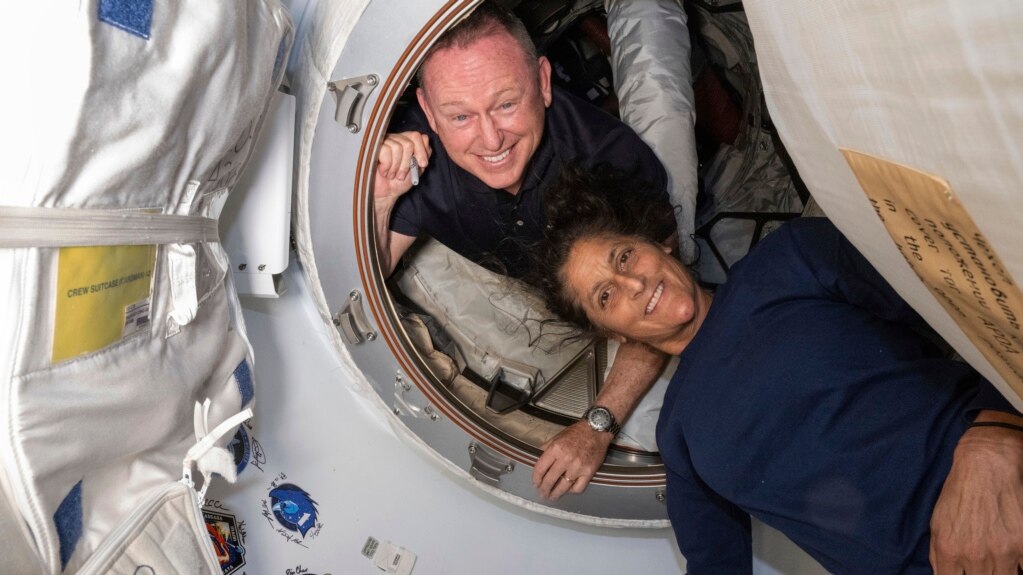Two American astronauts have been delayed at the International Space Station (ISS) while engineers try to fix problems with Boeing’s Starliner spacecraft.
Starliner is a joint project between Boeing and the American space agency NASA. The capsule arrived at the ISS on June 6. It had launched a day earlier from Cape Canaveral in Florida.
The trip was a test flight that marked the first time the Starliner spacecraft successfully carried astronauts to space. It transported NASA’s Butch Wilmore and Suni Williams to the ISS. The two were expected to remain in space for about one week.
But problems affecting Starliner have already led Boeing and NASA officials to postpone the trip back to Earth several times. Reuters news agency reported one of its sources with knowledge of flight planning said NASA was targeting a return date of July 6.
Since its June 5 liftoff, Starliner has experienced at least five helium leaks. In addition, some of the capsule’s thrusters have failed.
NASA would like to use Starliner to support its future exploration activities on the moon as part of its Artemis program. But Boeing has struggled to complete the testing process before it gets approval for repeated trips to the ISS.
Why was Starliner’s return trip postponed?
NASA wants more time to examine problems with Starliner’s propulsion system. This system is attached to the capsule but is not designed to return to Earth for inspection. Instead, it is released during reentry and burns up in the atmosphere.
Steve Stich is NASA’s commercial crew program manager. He explained the return delay during a news conference last week. Stich said, “We’re just taking a little more extra time to review all the data and also learn as much as we can while we have this service module in orbit." Starliner’s propulsion system is part of what NASA describes as the spacecraft’s “service module.”
The space agency also noted that it did not want the return flight to conflict with spacewalks. A spacewalk was called off this week after water leaked from an astronaut’s spacesuit. At least one other spacewalk is planned.
What problems are still being investigated?
Five of the capsule’s 28 thrusters failed after Starliner arrived at the ISS. NASA said all but one thruster restarted, and they were found to be working during a later test firing.
Officials suspect heat from increased thruster use on arrival at the ISS caused the problem. Boeing said the one problematic thruster had been turned off and would not be an issue for the return trip.
The capsule launched with one small helium leak and four more were discovered by the time it reached the ISS. Helium is used to pressurize fuel for the thrusters. A rubber seal was suspected of failing, causing the problem.
What comes next?
Boeing and NASA say they will continue to consider landing dates once the spacewalks are completed.
Boeing has said the capsule can remain at the space station for 45 days or longer if needed. Mission leaders plan to keep examining the thruster problem and helium leaks.
With their extended stay, Wilmore and Williams have been helping with chores and research at the orbiting space laboratory. NASA has said there is no rush for the astronauts to leave and there are enough supplies to support their stay.
During his comments to reporters last week, NASA’s Stich stated the agency’s desire to safely return the astronauts as soon as possible. “So far, we don’t see any scenario where Starliner is not going to be able to bring Butch and Suni home,” he said.
I’m Bryan Lynn.

